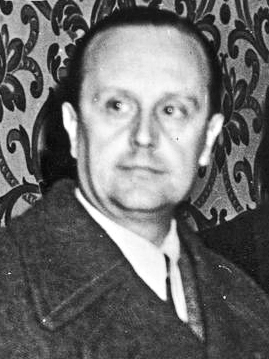Raimundo Fernández-Cuesta facts for kids
Raimundo Fernández-Cuesta y Merelo (born October 5, 1896, in Madrid; died July 9, 1992, in Madrid) was an important Spanish politician. He was a key figure in the Falange party and its later versions. The Falange was a political movement in Spain during the 20th century.
Contents
Early Life and Education
Raimundo Fernández-Cuesta grew up in Madrid. He studied at the local university and earned a law degree. From a young age, he was a close friend of José Antonio Primo de Rivera, who founded the Falange.
In 1933, Fernández-Cuesta joined the Falange. He became the party's first secretary. He was known as a very good public speaker. In the 1936 election, he ran as a candidate for the Falange, but he was not elected.
During the Spanish Civil War
When the Spanish Civil War began, Fernández-Cuesta was put in prison by the Republican side. He tried to escape twice, but he was caught both times. In October 1937, he was set free. This happened as part of a prisoner exchange. He was traded for Justino de Azcárate, who was held by the other side.
After his release, he became the Secretary General of the combined Falangist-Carlist movement. However, he was not very good at organizing politically. So, in 1939, Agustín Muñoz Grandes took over his role. Fernández-Cuesta also served as the Agriculture Minister in Francisco Franco's early government in Burgos. This job also did not go very well.
Time Away from Power
After the Spanish Civil War, a powerful politician named Ramón Serrano Súñer arranged for Fernández-Cuesta to leave Spain. He became the Spanish ambassador to Brazil from 1940 to 1942. Then, he was ambassador to Italy from 1942 to 1945.
His reputation was also hurt because his policies as Agriculture Minister had failed. Spain faced a serious food shortage in the 1940s. Even so, he was always very loyal to Franco. This loyalty meant he would always have some influence in the government.
Return to Government
Fernández-Cuesta returned to important political roles in 1945. He was appointed Minister of Justice. In this role, he tried to make Spain's treatment of political prisoners a bit softer. This was done to gain support from countries like those in NATO. In December 1949, he announced plans to release 13,000 political prisoners. However, only about 3,000 were actually released.
In 1951, he became the General Secretary of the Movement. Under his leadership, the government became stricter again. There was unrest because of rising unemployment. He lost this position in early 1956. This happened after a riot at the University of Madrid. Some people said that the Falangist youth group, Frente de Juventudes, had been too harsh with students. These students wanted to form their own group outside the official government one. After he left, his friend José Luis de Arrese took his place. Franco wanted to keep a balance between different groups in his government.
After this, Fernández-Cuesta was less involved in top politics. He was linked to very conservative figures like General Iniesta Cano and Blas Piñar. He remained a member of the Cortes Españolas (the Spanish parliament). He was known as one of the most traditional and strict Franco supporters. He strongly disagreed with any moves towards more freedom in the early 1970s. This was when Franco was getting older and had less day-to-day power.
After Franco's Death
After Franco died, Fernández-Cuesta started a new political group. It was called the Falange Española de las JONS. This group looked back to the past and did not gain much support in democratic Spain. Even though he led his own party, he was also allowed to be a member of Blas Piñar's Fuerza Nueva. The two parties worked together for the 1977 election. However, they only received a very small percentage of the votes.
Fernández-Cuesta left politics in February 1983. Diego Márquez Horrillo became the new leader of Falange Española de las JONS. In 1985, Fernández-Cuesta published his memories in a book called Testimonio, Recuerdos y Reflexiones.
| Preceded by new post |
General Secretary of the Movement 1938-1939 |
Succeeded by Agustín Muñoz Grandes |
| Preceded by José Luis de Arrese |
General Secretary of the Movement 1948-1956 |
Succeeded by José Luis de Arrese |
See also
In Spanish: Raimundo Fernández-Cuesta para niños


